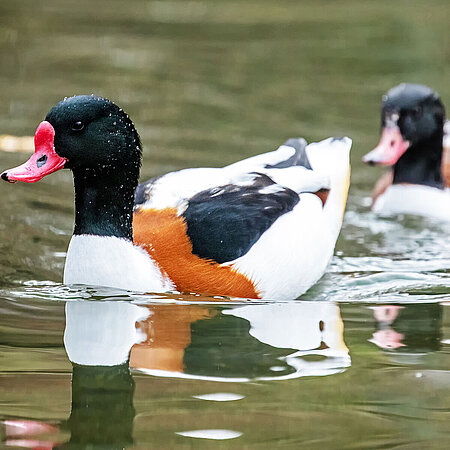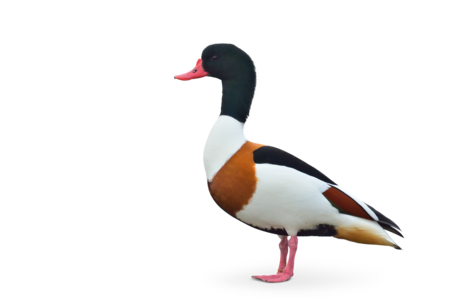Common Shelduck
Tadorna tadorna

- FamilyAnatidae (Ducks, geese and swans)
- Weight800 – 1.500 g
- HabitatSandy beaches, Wadden Sea
From courtship to breeding
During breeding season, the knob at the base of the male’s red bill is enlarged. Nesting sites are often shared by several females, where all lay their eggs. Once hatched, chicks are led by both parents to the water where they begin to learn to forage for themselves. The common shelduck is a member of the Tadorninae (half duck/half goose) subfamily and bears typical characteristics of both duck and goose. Hence, the shelduck is sometimes called sheldgoose.

Set meal times
Common shelducks primarily eat snails, mussels and worms, which they forage in shallow waters. In their search for food, the birds are dependent on the tides. They can only find food at low tide. During high tide the birds take a rest on dunes, sandbanks or shoreline meadows. As intertidal feeders, common shelducks also feed at night.
The birds lose their wing feathers during moulting and become flightless for a while. Up to 100.000 individuals can gather at protected areas with a rich supply of food.
Distribution
